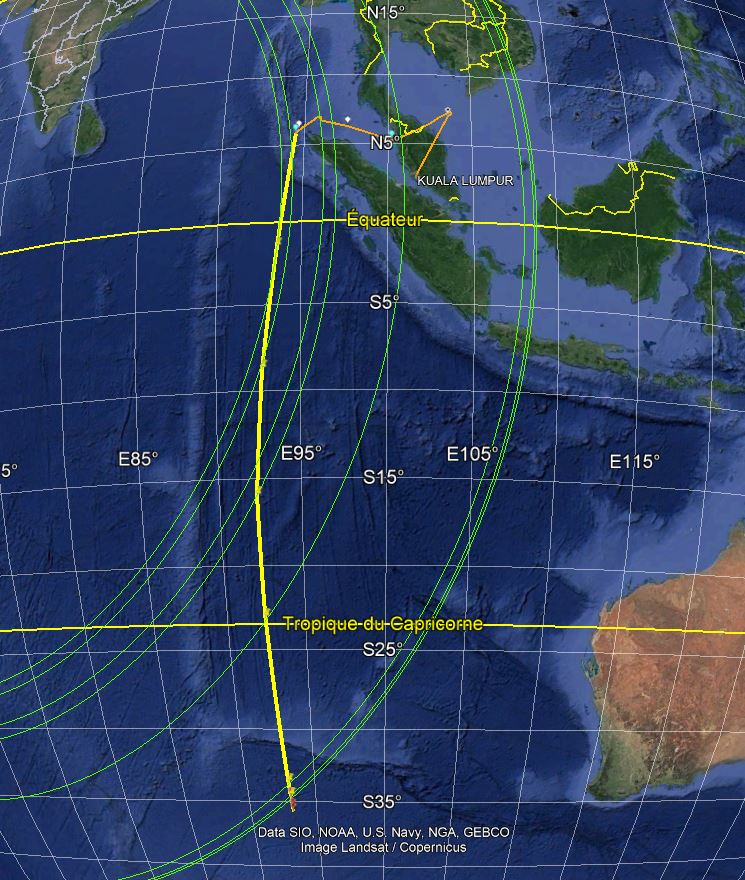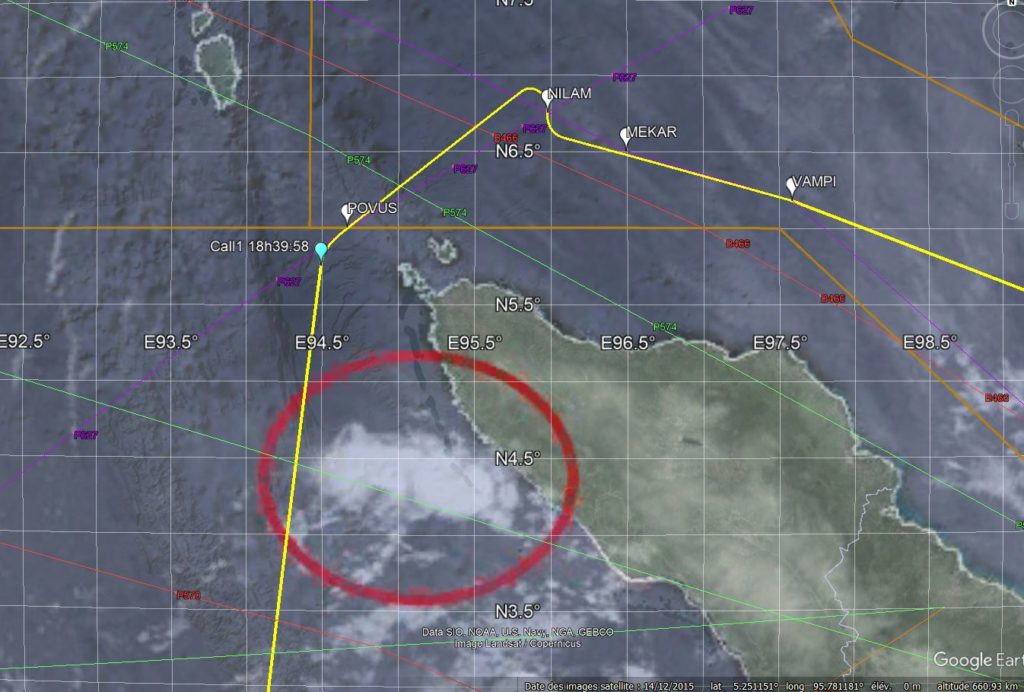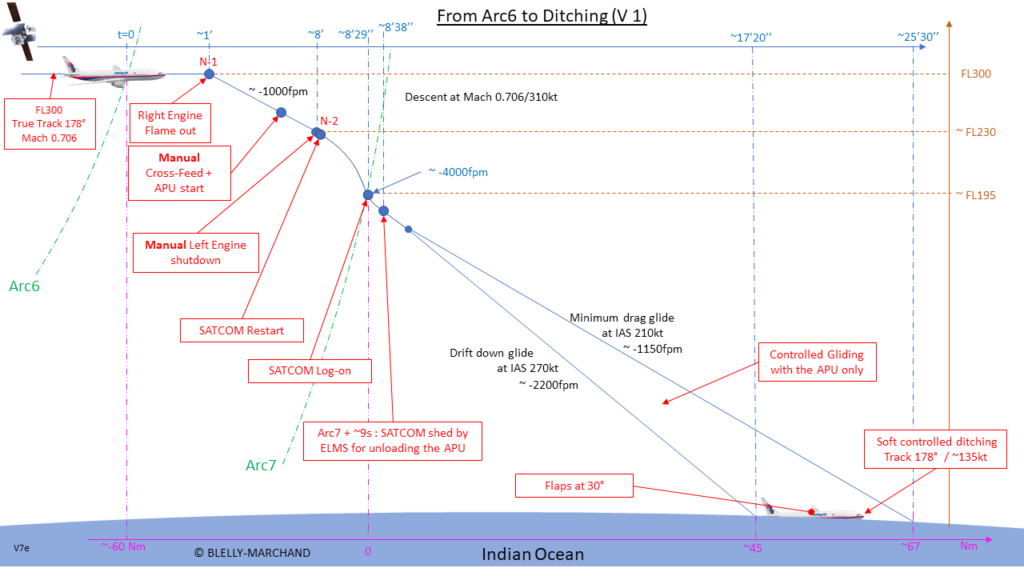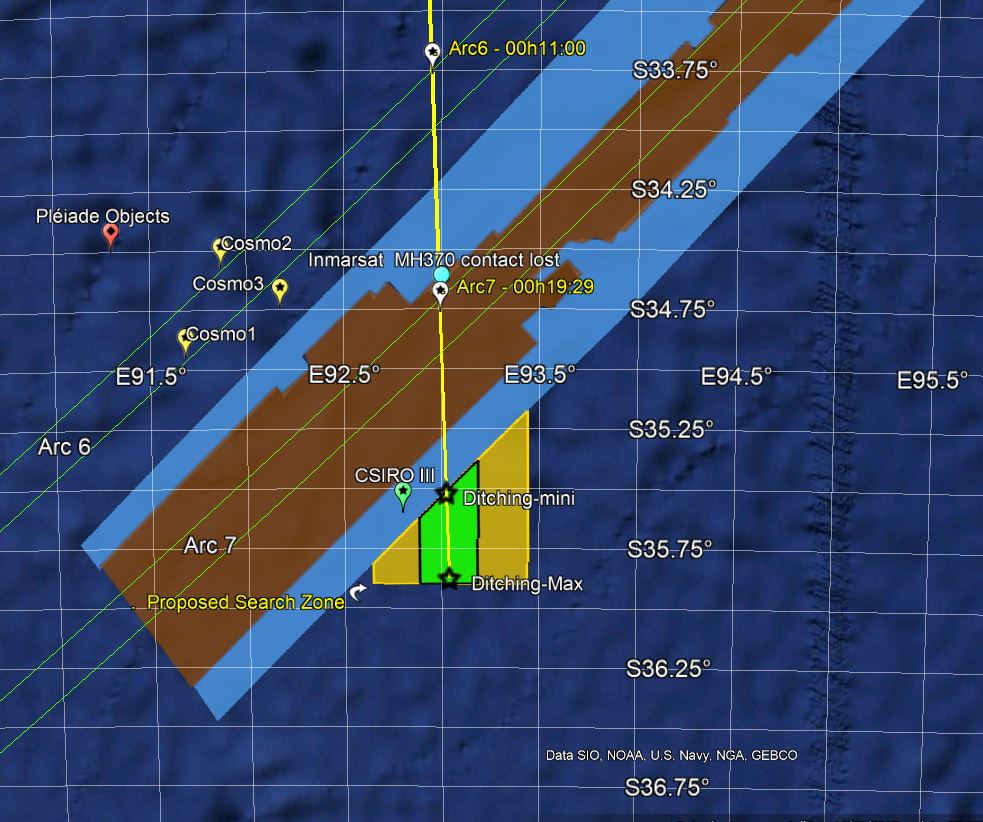Captain Blelly published the results of his research in a French book entitled « MH370 La contre-enquête d’un pilote ».
His first major hypothesis is that Flight MH370 embarked on a fatal journey of no return. The second major hypothesis is that it was piloted until the end.
The latest Analysis of Flight MH370 details the fully reconstructed trajectory from the flight’s diversion around 17:20 UTC after the IGARI waypoint to a controlled water landing in the southern Indian Ocean. ( also available in French)
The two parts of the flight have been studied in details: the trajectory from Kuala Lumpur to the last radar contact known thanks to a solid set of surveillance data, and the “unknown” but recalculated trajectory thanks to the unique set of data provided by Inmarsat.
The study on the known trajectory concludes that the aircraft was manually piloted from the rerouting at waypoint IGARI until reaching the northwest of Sumatra. It was also voluntarily depressurized and electrically powered by the RAT only.
The study of the recalculated “unknown” trajectory shows that, knowing the flight duration and the fuel quantity onboard, the flight was performed at a constant altitude (FL300) and at the ICAO recommended linear waiting speed of IAS 265kt (or constant Mach 0.706) from the end of the final major turn (FMT) until 00h12 UTC approximately i.e. just after Arc6.
Considering the very small number of pieces of debris recovered so far, a controlled ditching is the most probable way for the aircraft to have touched-down. Captain Blelly’s innovative assumption is that the person in command did not wait for the fuel to be exhausted and probably decided to shutdown voluntarily the last running engine timely before running out of fuel. By doing so, the Auxiliary Power Unit could provide sufficient power to the aircraft control surfaces during the final gliding and the eventual ditching with the flaps fully extended.
CAPTION collaborated to the reconstruction of this recalculated complete piloted trajectory.




